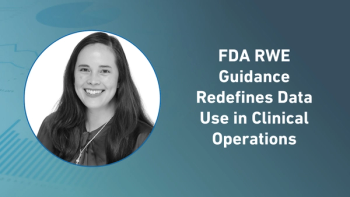
Creating a Self-Sustaining Clinical Trial Quality Management System
Large clinical research enterprises have the resources to establish high standard clinical trial Quality Management Systems, while smaller enterprises may not have the means to do so. This article covers how clinical research enterprises can leverage technologies to develop an efficient clinical trial QMS.
Many large biopharmaceutical and medical device enterprises (clinical research enterprise) tend to have well-established clinical trial Quality Management Systems (QMSs), and expend a lot of resources to sustain necessary oversight to maintain gold standard quality in clinical operations. However, smaller clinical research enterprises with limited resources may struggle to efficiently achieve the same level of quality. In this article, we will describe how a clinical research enterprise can leverage clinical technologies to develop an efficient self-sustaining clinical trial QMS. Define your risks The first and foremost task is to understand your study’s risks; what risk are you trying to mitigate?
- Is it pharmacological in nature?
- Interpretational/subjective?
- Operational?
- Financial?
- Regulatory?
- Technological?
While much of risk mitigation tends to be associated with expending resources upfront to design a solid protocol, study teams need to conduct a thorough evaluation of study risks (typically via
Risk Assessment Tools, now accessible for free on the cloud
) via cross-functional collaborations.
Transform risks into analytics
In order to measure and oversee clinical trial risk, study teams must quantify risk analysis by transforming qualitative risks into measurable and quantifiable analytics. While QMSs come in many forms, we will use a rating system for demonstration purposes; accordingly, for example, in order to mitigate data variability risk in a psychiatric study that depends heavily on the skill of raters, study teams have to not only select qualified site personnel to conduct ratings, but, they also need to set up a system that enables PIs (or an independent party) to rate the quality give a score, and offer feedback on the rater’s assessment. Correspondingly, scores can be aggregated, and raters can be put in varying risk categories. For more complex assessments that require PI ratings (i.e., ECOG score interpretation via Karnofsky Status in order to gauge patient improvement), a medical adjudication committee can act as a quality reviewer.
Leverage technologies and workflows
With advances in clinical technologies and computer data science, clinical research enterprises can now implement customized workflows to not only improve study oversight, but, also act as a means to communicate with study sites. To expand on the aforementioned examples, a reviewer can communicate the quality score of a rater at a study site through the use of clinical technology. Moreover, study teams can leverage visualizations (i.e., colorized tables, or plots) to categorize study site rater risk by reviewer quality scores, and implement specific quality improvement rules (i.e., raters who have a quality score <50 need more oversight by a more experienced/qualified site staff before they are able to conduct ratings on their own).
Leverage the study site
It is important to emphasize that maintaining the relationship with, and managing the study site is one of the larger time and resource investments that the clinical research enterprise makes during clinical operations. Being one of the larger investment assets, the study site should be incorporated into the QMS in order to actualize a self-improving system. To elaborate on the previous example, in combination with quality scores, enabling reviewers to also include written feedback on to help guide raters at study sites, and improve rater quality essentially enables site raters to learn as they become more familiar with study operations, and data quality expectations. In some form, the clinical research enterprise currently does this with human resources (i.e., monitors during visits). The challenge with this model (
as demonstrated in a previous interview with a compliance expert
), is that subjectivity is introduced and the process may not necessarily be as efficient as consistent analytical interactions. To demonstrate, CRAs may miss essential signals, and feedback is incorporated in infrequent monitoring reports that generally state areas lacking data quality. This model is not conducive towards collaborative learning, nor does it offer the capability of analytically measuring quality. With self-improving QMSs that enhance communications powered with clinical technology, study sites are much more likely to learn quality expectations as they go along, and feel involved in the process of quality improvement. Additionally, sponsors can measure quality improvement through analytics. Figure 1 comprehensively illustrates the aforementioned example. It is important to emphasize that this example is just one of many different self-sustaining QMSs that can be implemented in clinical trials.
With the ability to measure clinical trial quality with analytics, sponsors can not only demonstrate improved oversight, but, also optimize and standardize their quality management programs to address higher risk areas. Additionally, the self-sustaining approach exploits the existing clinical research infrastructure to efficiently improve quality. Further, leveraging technology and computer data science can help clinical research enterprises (especially smaller ones) achieve gold standard quality more efficiently and with less resources.
Newsletter
Stay current in clinical research with Applied Clinical Trials, providing expert insights, regulatory updates, and practical strategies for successful clinical trial design and execution.



